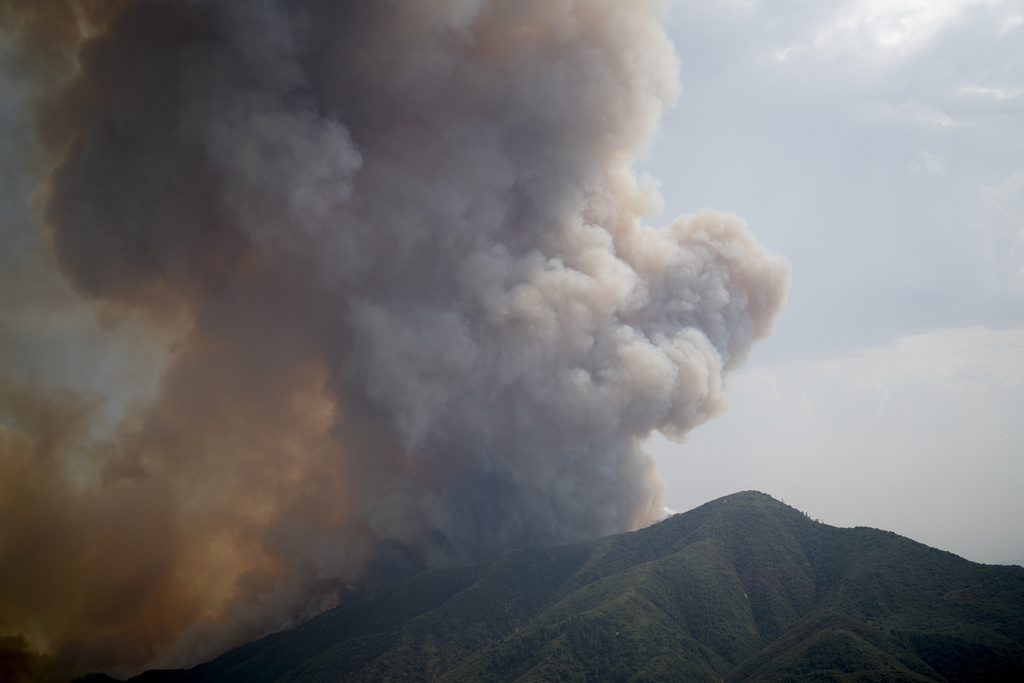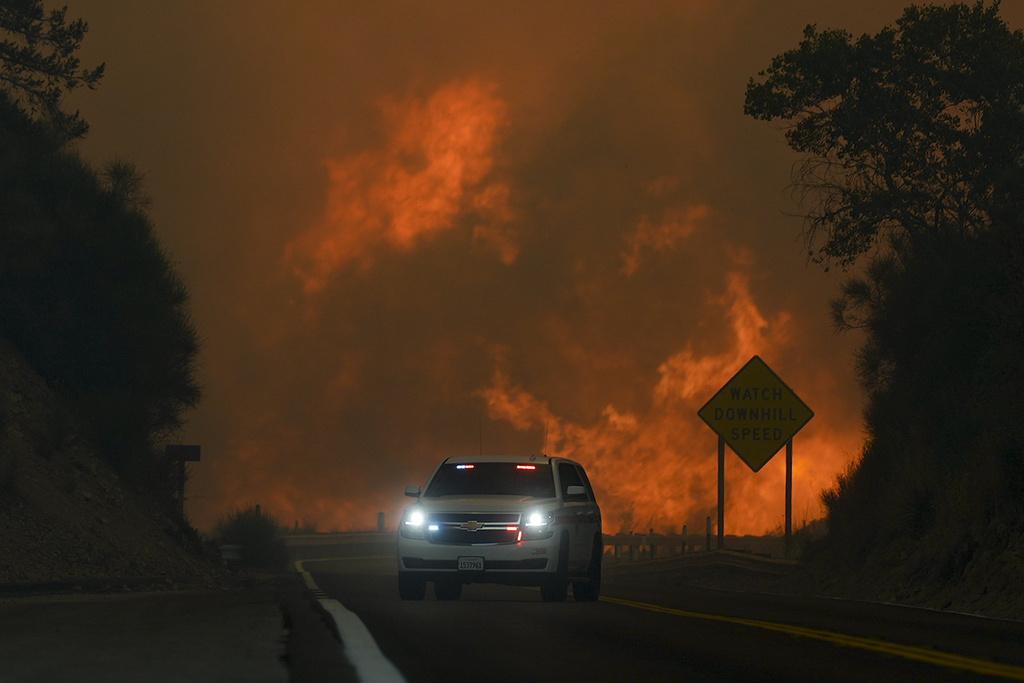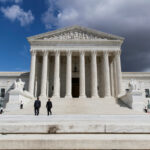Wildfire Expands Near Los Angeles Amid Intense Heat \ Newslooks \ Washington DC \ Mary Sidiqi \ Evening Edition \ A rapidly spreading wildfire, dubbed the Line Fire, has scorched 11 square miles near the San Bernardino National Forest, east of Los Angeles, fueled by a severe heat wave with triple-digit temperatures. Despite efforts by 500 firefighters, the blaze remains uncontrolled, prompting expanded evacuations and concerns about further growth. The fire coincides with record-breaking heat, making conditions even more dangerous for residents and responders.

Near Los Angeles Wildfire, Quick Looks
- Wildfire: The Line Fire has burned 11 square miles near the San Bernardino National Forest, east of Los Angeles.
- Heat Wave: The fire is fueled by extreme triple-digit temperatures from a prolonged heat wave.
- Uncontrolled Blaze: Despite 500 firefighters battling the fire, it remains uncontrolled and poses a threat of further growth.
- Evacuations: Evacuation zones have been expanded as the fire approaches residential areas.
- Aerial Support: Water-dropping helicopters and aircraft are assisting ground crews in containing the blaze.
- No Injuries: No injuries or property damage have been reported so far.
- Record Heat: Downtown Los Angeles hit 112°F, marking the third time since 1877 that such high temperatures were recorded.
- Health Advisory: Residents are urged to stay indoors due to poor air quality and smoke hazards.
Deeper Look
Evacuations were widened on Saturday as a fast-moving wildfire with towering flames swept through the foothills of a national forest east of Los Angeles. The blaze, fueled by extreme temperatures from a days-long heat wave, continued to spread as the region faced triple-digit heat. Temperatures soared, creating hazardous conditions for residents and firefighters alike.
Dubbed the Line Fire, the wildfire was burning uncontrolled along the perimeter of the San Bernardino National Forest, located roughly 65 miles (105 kilometers) east of Los Angeles. By Saturday afternoon, the fire had consumed around 11 square miles (28 square kilometers) of grassland and dense chaparral, with a thick cloud of dark smoke hovering over the area, blotting out the sky and spreading miles away from the fire’s core.
The fire ignited Thursday evening, though its cause remains under investigation. Authorities have not yet determined whether human activity or natural causes triggered the blaze.
A force of approximately 500 firefighters was deployed to the scene, working tirelessly to contain the fire. Helicopters and aircraft were used to douse the flames with water and fire retardant, flying low over homes and hillsides, while ground crews attacked the blaze from multiple fronts. Despite their efforts, officials warned that the fire had the “potential for large fire growth” in the next 12 hours, as conditions favored its spread.
The fire produced spiraling columns of dense, black smoke, making visibility difficult and worsening air quality in surrounding communities. Flames were seen cresting the ridges of the foothills, racing down slopes toward populated areas. Fortunately, no injuries had been reported, and as of Saturday, no homes or structures had been damaged or destroyed.
Local authorities expanded evacuation zones as the fire advanced, urging residents to leave their homes if they were in the path of the blaze. Temporary shelters were established to accommodate those displaced by the growing inferno. Firefighters worked around the clock to protect both homes and critical infrastructure.
The Line Fire comes amid an intense heat wave that has gripped the region for several days. The National Weather Service reported that downtown Los Angeles reached a sweltering 112 degrees Fahrenheit (44 degrees Celsius) on Friday, marking only the third time since record-keeping began in 1877 that temperatures had climbed this high in the area. The combination of high temperatures, dry vegetation, and low humidity created the perfect conditions for wildfires to spark and spread rapidly.
While Los Angeles faced scorching heat, residents closer to the fire were not only dealing with the extreme weather but also the added threat of smoke inhalation and fire hazards. Health officials warned people to stay indoors where possible, especially those with respiratory issues, as air quality deteriorated.
Authorities remain concerned about the fire’s continued growth, particularly as the heat wave shows no sign of letting up. Firefighters have been stretched thin across the state, battling multiple wildfires as California enters what is historically the most dangerous part of the wildfire season. Officials have called for additional resources and personnel to assist in containing the Line Fire, but full containment is expected to take several more days, if not weeks, depending on weather conditions.
As residents face uncertainty and await updates, the fire serves as yet another reminder of the increasing frequency and severity of wildfires in California, exacerbated by climate change and prolonged droughts. Though no fatalities or property losses have been reported so far, authorities are urging caution, preparing for potential escalation in the days ahead as crews continue to battle the blaze on the front lines.
Wildfire Expands – Los Angeles Wildfire Expands – Fires – Wildfire Expands







